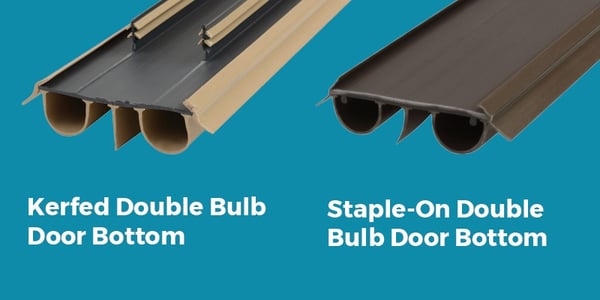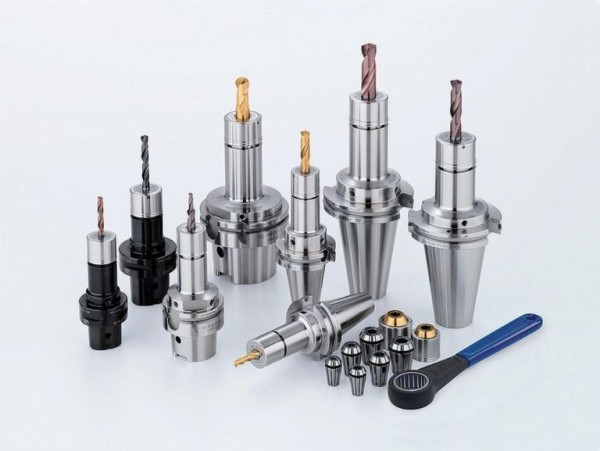What are Round Nose Pliers and What Are They Used For?
When you’re making jewellery, you want every loop you bend
to be as accurate as possible.
But if you’ve not got the right tool for the job, you can
end up with a sub-par end product.
Today we’ll be discussing round nose pliers, and how they’re
tailor-made for forming the perfect round loops – every time.
What are round nose pliers?
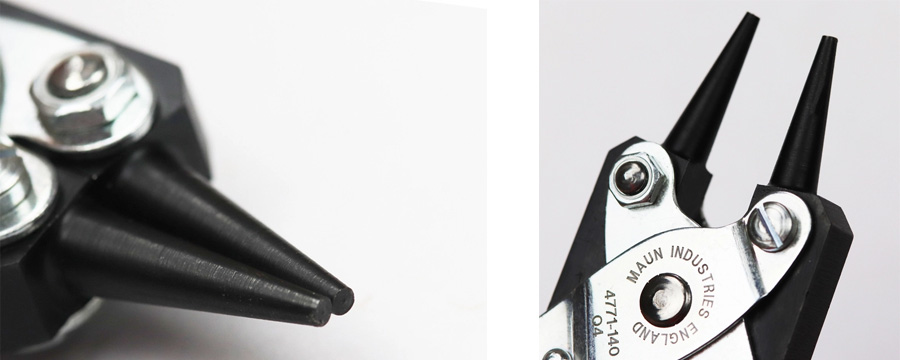
Round nose pliers are a type of pliers that have rounded
edges on the plier jaws. They are often used in the jewellery industry for
making round joins or loops in wire. Usually, when looking at the jaws head on,
each jaw has a circular profile, although there are other variations to this
for different tasks, such as having one jaw round and the other flat.
It’s often best to choose a parallel plier when you can
(where the jaws close together in parallel instead of a scissor action) as they
give a more even grip onto small objects, resulting in less damage to materials
and fewer mistakes.
What are they used for?
The most common use of round nose pliers is in the jewellery
industry, where they can be used to make jewellery findings (connections
between jewellery parts) such as jump rings, toggle clasps and bails.
The round jaws allow you to hold your wire securely, while
making the smooth curves found in ornate jewellery.
Many round nose pliers will
have a tapered jaw, allowing one set of pliers to be used for many different
sizes of loops, by simply bending them further up or down the pliers’ jaws.
Why use round nose pliers instead of normal pliers?
Round nose pliers are used to create perfectly round edges.
Normal pliers do not have round edges, and so you will always be left with
imperfect shapes, which is particularly bad if this is something you’re making
to sell for its visual appeal, such as jewellery.
It also may be bad if accuracy is important, for example, if
a connection requires a perfectly round hole, and you’ve used inaccurate pliers
that can’t get it to match.
How to use round nose pliers
Here is how to use round nose pliers to make loops:
- Hold the pliers in your hand, with the opening
of your pliers parallel to the work surface.
- Place your wire in the jaws of your plier, at
the thickness you want your loop to be, and hold it firmly. You can mark your
pliers with a pen to ensure you get the same thickness each time.
- Make sure the wire end is not raised above the
jaws of the pliers, to ensure your loop is accurate.
- Twist your wrist towards you to make an initial
bend.
- Relax your wrist, and move the pliers back.
- Hold firm and twist your wrist again.
You should now have a loop, which you can bend back on
itself to centre it against the wire.
Types of round nose pliers
There are lots of different types of round nose pliers for
different jobs, so here we go over the different types:
Fully Round
Fully round jaw pliers are where each individual jaw is a
complete circle, offering you lots of possibilities when forming loops, without
damaging work pieces with any harsh flat edges.
Choose a set that has parallel jaws for better purchase, as
well as a return spring, such as
this set.
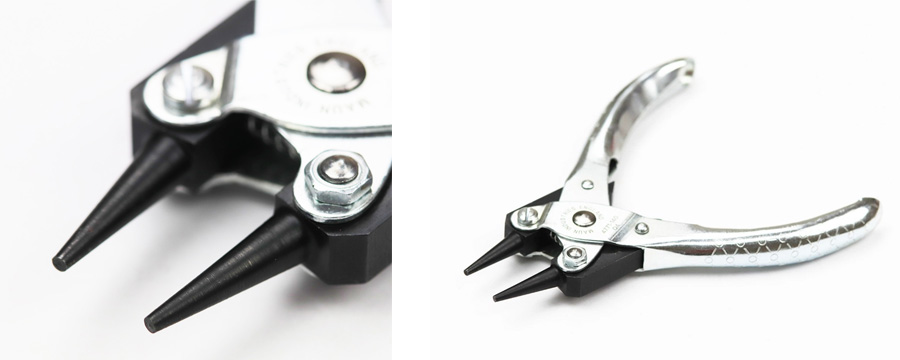
Round and Flat Jaws
Round and flat jaw pliers have one round jaw and one normal
flat plier jaw.
These are also great for loop making, giving a slightly
better purchase on the material due to the one flat jaw.
Again go with a parallel action plier for better purchase on
metals, such as
this set of pliers.
You could also go for a Nylon lined set to be extra careful when handling delicate
pieces, as the edge won’t be damaged.
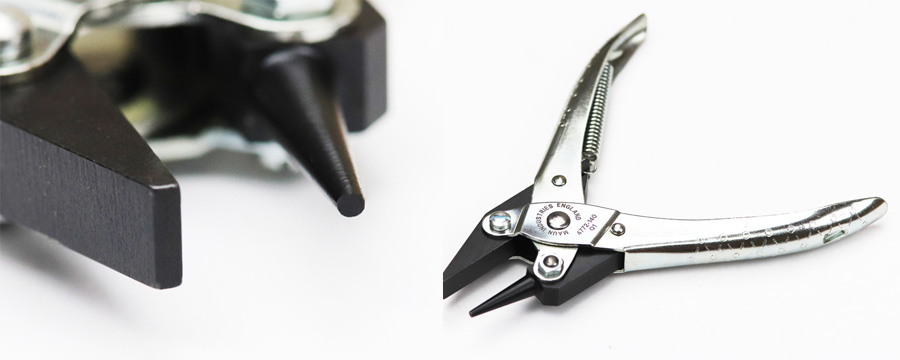
Half Round and Flat Jaw
Half round and flat jaw pliers have one normal flat jaw, and
one jaw with a rounded inner edge but a flat outer edge.
These are used for making rings, where you can get a good
purchase with the normal jaw, but still get a great round edge by bending
against the round jaw.
Choose a parallel action half round set such as this one.
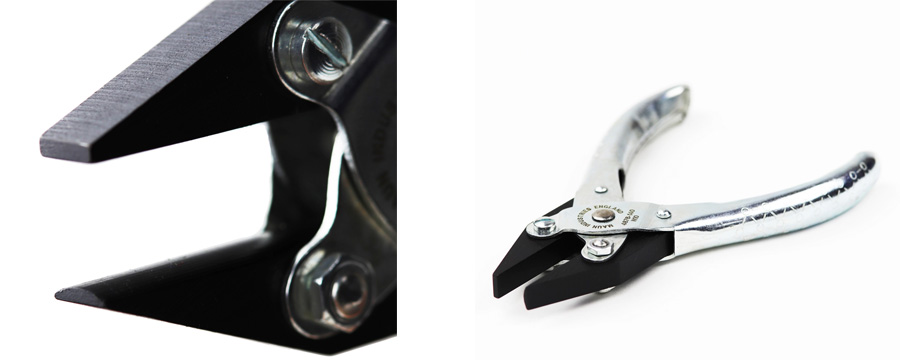
Bail Making Round Pliers
Bail making pliers are used to create wire loop bails, to
attach to pendants or necklaces.
It’s important with bails to ensure consistent sizing, so
choosing a set of pliers with an adjustable screw to fix the position is a
must.
This set from Maun is perfect for that.
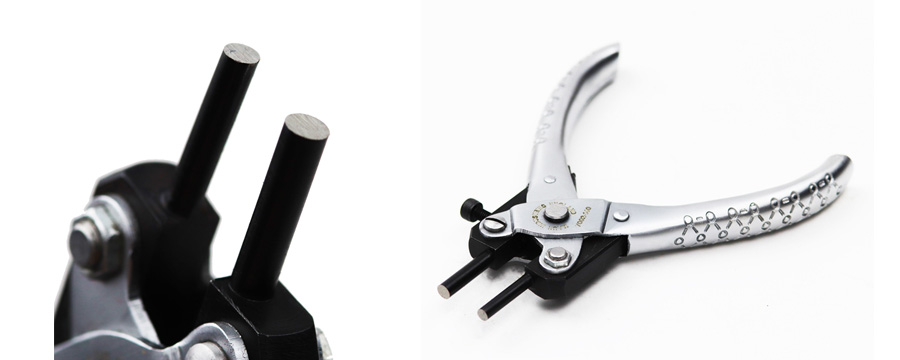
Alternatives to round nose pliers
If you don’t need as accurate a round bend, then you can
choose normal flat nose pliers as an alternative to round nose ones. But
realistically, anyone who wants to make professional standard jewellery needs
to be investing in the proper jewellery pliers for the job.
Are round nose pliers the same as needle nose?
No, round nose pliers are not the same as needle nose
pliers. Needle nose pliers have much longer jaws, but without the rounded edge
that round nose pliers have.
Jewellery making plier kits
If you need more than one set of pliers for starting a
jewellery hobby or business, you may prefer to buy a set instead of just a pair
of round nose pliers, to save yourself some money.
This jewellery making kit is
a good starter set, containing a pair of Full Round Jaw Pliers, a Half Round
and Flat Jaw pair and a Smooth Jaw Flat Nose pair.
If you’re looking for something more advanced, you could
choose
a 4 piece set like this that also contains a set of Snipe Nose pliers, or a 5 piece set that contains the extra Snipe Nose pair, as well as a set of
Round and Flat Jaws pliers.
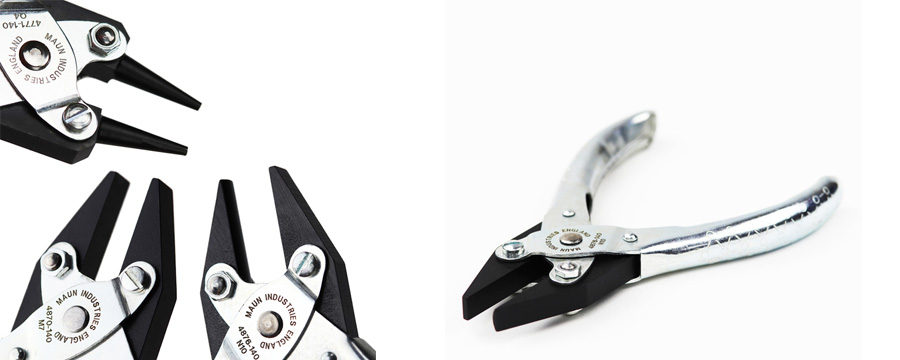
Related products:
- Jewellery Pliers
- Jewellery Tools
Browse Related Blog Posts:
- Guide to Jewellery Making Pliers
- Jewellery Making Tools for Beginners
- What are the best jewellery pliers
- Best Jewellery Tools
- Different Types of Pliers
- Types of Pliers
- What are Pliers Used For
- How to use pliers?
- What are the best combination pliers?
- How to use metal ball chain pliers?
- What are parallel pliers
- Best Plier Sets
- What are Pliers
- What are combination pliers and how do they work?
